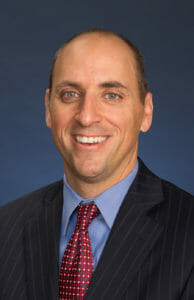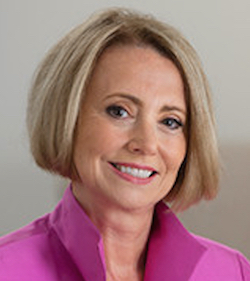When Salmon Health and Retirement instituted a COVID-19 vaccine mandate for its four Massachusetts nursing homes, CEO Matt Salmon was confident in the decision because he expected state officials would soon do the same for all skilled settings in the Bay State.

Several weeks later, he’s working to get the final 14% of his staff vaccinated so that he won’t have to terminate them come the statewide Oct. 10 deadline. He’s part of a crowd thousands deep as skilled nursing leaders nationwide grapple with an as-yet undetermined federal mandate deadline and the threat of losing much-needed staff.
Labor shortages are nothing new during a crisis that has driven virtually all providers to hire agency staff or pay overtime due to sick and exposed workers or unprecedented attrition.
But the threat of losing multiple employees in a single clip adds a new wrinkle to hiring efforts. Even as they recommit to educating about vaccines, providers are busy building databases, pre-booking travel nurses and employing new technologies to go after job candidates they presume they’ll need.
“Executives must have a clear strategy in place,” said Peter Corless, executive vice president of enterprise development for OnShift. “They need to know how many staff are currently vaccinated and work with management to estimate by employee those who they think definitely will not agree to be vaccinated vs. those who may eventually agree. This will then inform decisions about … how to direct continuing education efforts and where to step up recruiting and planning for extra coverage.”
Workforce software companies like OnShift, Kronos and Apploi have seen a major uptick in skilled nursing clients this year, even before mandates added a new impetus to invest more in recruitment tools. Medline, which offers solutions from several vendors, said it had inked 450 new long-term care contracts in the first half of the year, as operators look to streamline hiring, retention and repeated training efforts.
Salmon was among 70 providers that signed up for OnShift’s services in early 2021, adding more flexible scheduling alternatives in hopes of providing more consistent staffing and drive quality goals.
AHCA earlier this summer reported 94% of all nursing homes were facing staffing shortages, with providers in states such as Florida reducing admissions when bonuses and overtime aren’t enough to attract all the candidates needed.
Matt Salmon told McKnight’s last week that labor issues at his facilities, all in suburban settings, aren’t the worst he’s experienced during the pandemic. But he still describes filling the ranks as a “battle every day.”
With ongoing education and a series of now-resumed clinics, Salmon has seen 86% of its roughly 1,500 healthcare, retirement living and other workers get vaccinated. Salmon expects he’ll be able to get most others on board, but acknowledges the odds of achieving 100% compliance are slim.
“The (state) mandate helps tremendously,” he said. “Still, we’ve come to the realization: We are going to have to let some people go. They’re just not going to get the vaccine. We can’t have unvaccinated staff working close to our residents.”
So who will replace them? Salmon’s team is getting creative. This year, they used business intelligence tools from Microsoft to overlay addresses of state-certified nurse aides with communities where current staff live and work. Then Salmon offered employees a “mini-recruiter” bonus to go door to door, often within the same apartment buildings, to talk to qualified neighbors about their workplace and encourage them to apply.
Salmon recognizes good old-fashioned shoe leather might not be enough as the mandate kicks in. The company also has pre-booked travel nurses around key dates.
Preparing for the worst
Cherie Kloss puts thousands of travel nurses to work annually as CEO of the platform SnapNurse. Where once she sought to provide clinical and ancillary relief during strikes, she has spent much of the last 17 months filling COVID-related gaps.
The platform is active in 23 states and 40% of her replacement candidates head to long-term care settings. Services include online credentialing, applicant tracking and the ability to curate a pool to meet specific qualifications (including having COVID vaccinations) through a provider-specific portal.
“As soon as providers put out vaccine mandates, people start leaving, even before the deadline,” says Kloss, who says rural providers are at the biggest disadvantage now, moreso because they have to pay even higher rates to entice choosy travel staff. “We wanted to treat it like a strike. On this date, all these people will be leaving and we’ll need to replace them. But there’s more of a trickle effect.”
The bulk of skilled nursing mandates have been pushed out to fall dates, with the Centers for Medicare & Medicaid Service expected to announce its own deadline sometime next month. But major providers, including Genesis HealthCare have said they will be enforcing their policies starting as soon as this week.
Anecdotally, some providers say they’ve had a rush of resignation notices since President Biden announced the nursing home-specific mandate last week. Others, including Randy Bury, CEO of Evangelical Lutheran Good Samaritan Society, say employees are taking a “wait and see” approach, knowing that other state or federal rules that come down the pike could limit their options.
Whether they expect vaccine-resistant employees to drift away now or pour out when final dates hit, Corless says providers can prepare. First, to limit wasted effort, it is critical to cover vaccine requirements in all job postings, to promote them on any career web pages and to highlight vaccine education efforts on social media.
Some hiring software also can add steps to the recruitment process to capture applicants’ willingness to get vaccinated or even just prove they are vaccinated.
Corless said with all the uncertainty, providers also need a way to quickly communicate needs to staffers who might be willing to pick up or switch shifts.
“One big trend we’re seeing among our customers is the creation of internal staffing pools,” Corless told McKnight’s. “Multifacility organizations with communities located within a certain mile radius are designating staff who are willing to work within these facilities as they are needed. These flex or float positions can help bolster their pool of available workers and provide staff with greater flexibility.”
Others are targeting recent retirees possibly open to part-time work, especially since 84% of U.S. seniors are vaccinated. Corless added that working with local faith-based and nonprofit organizations has proven successful for some operators.









